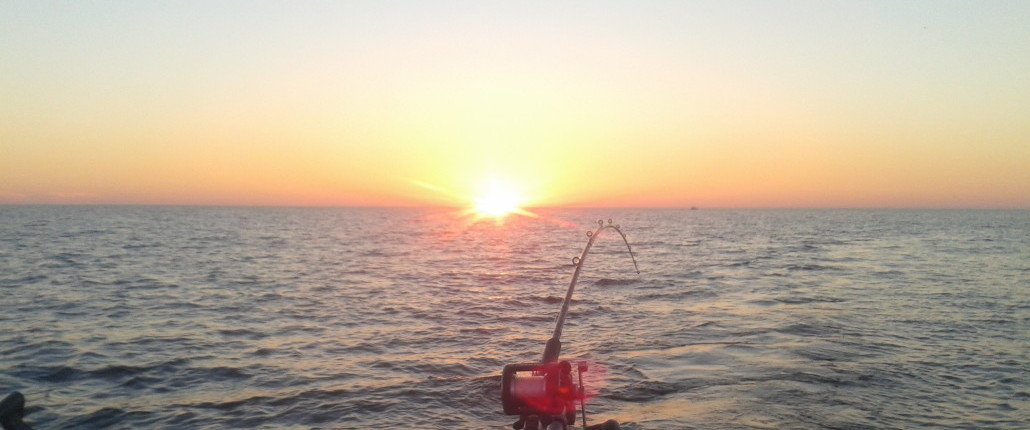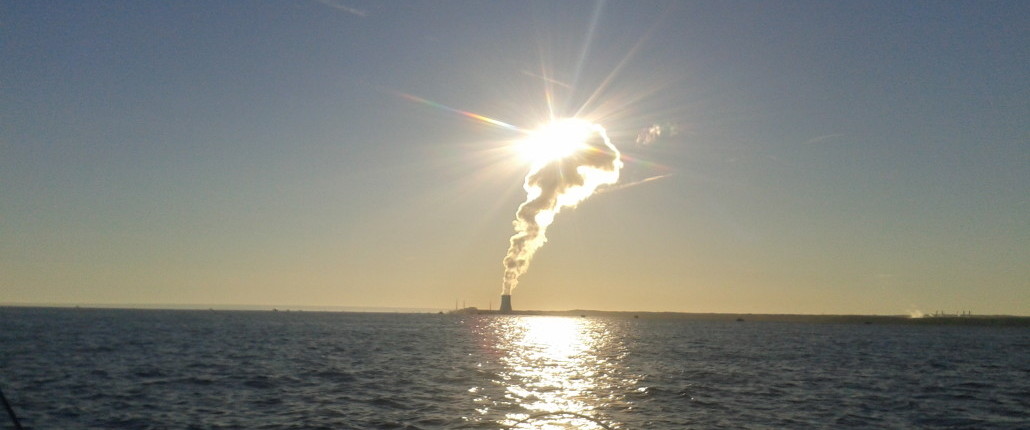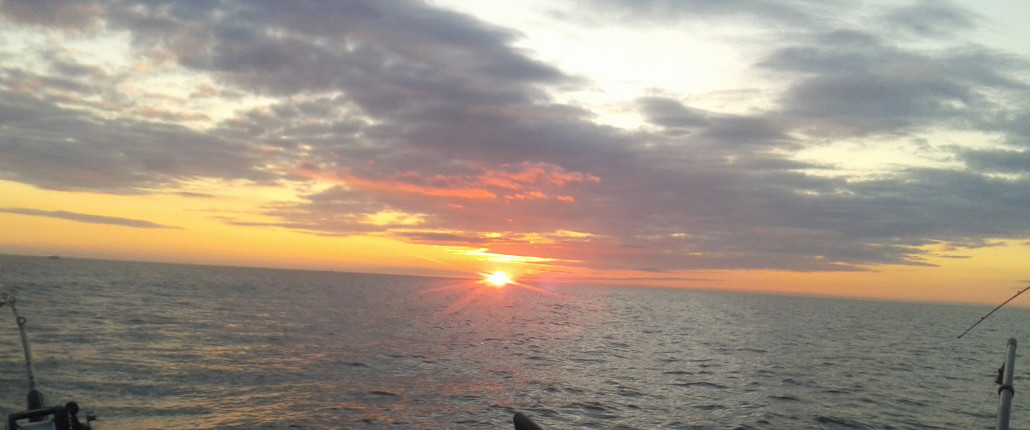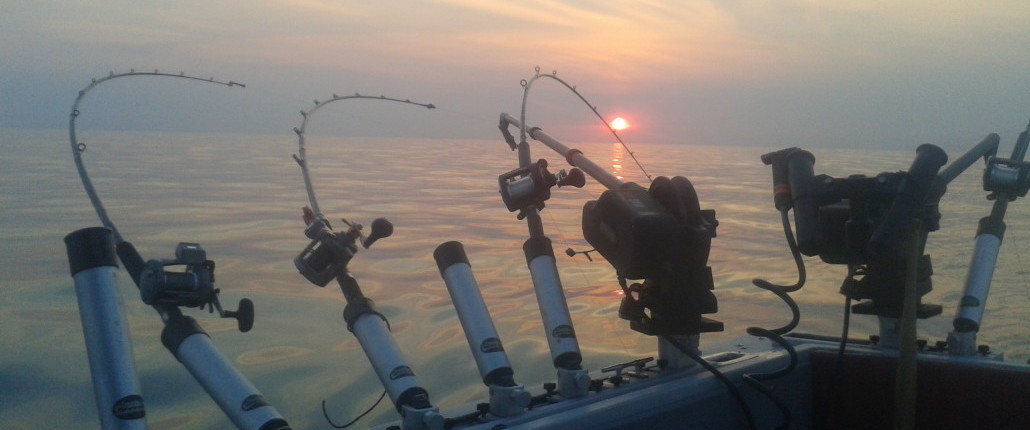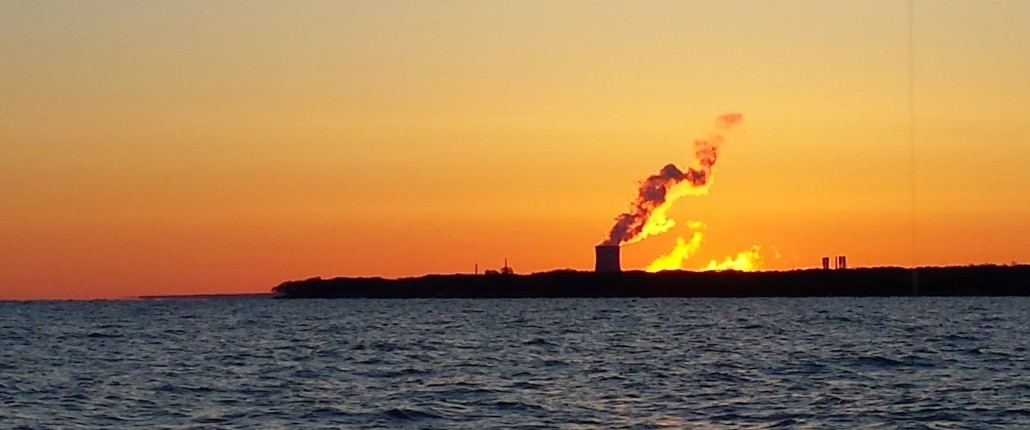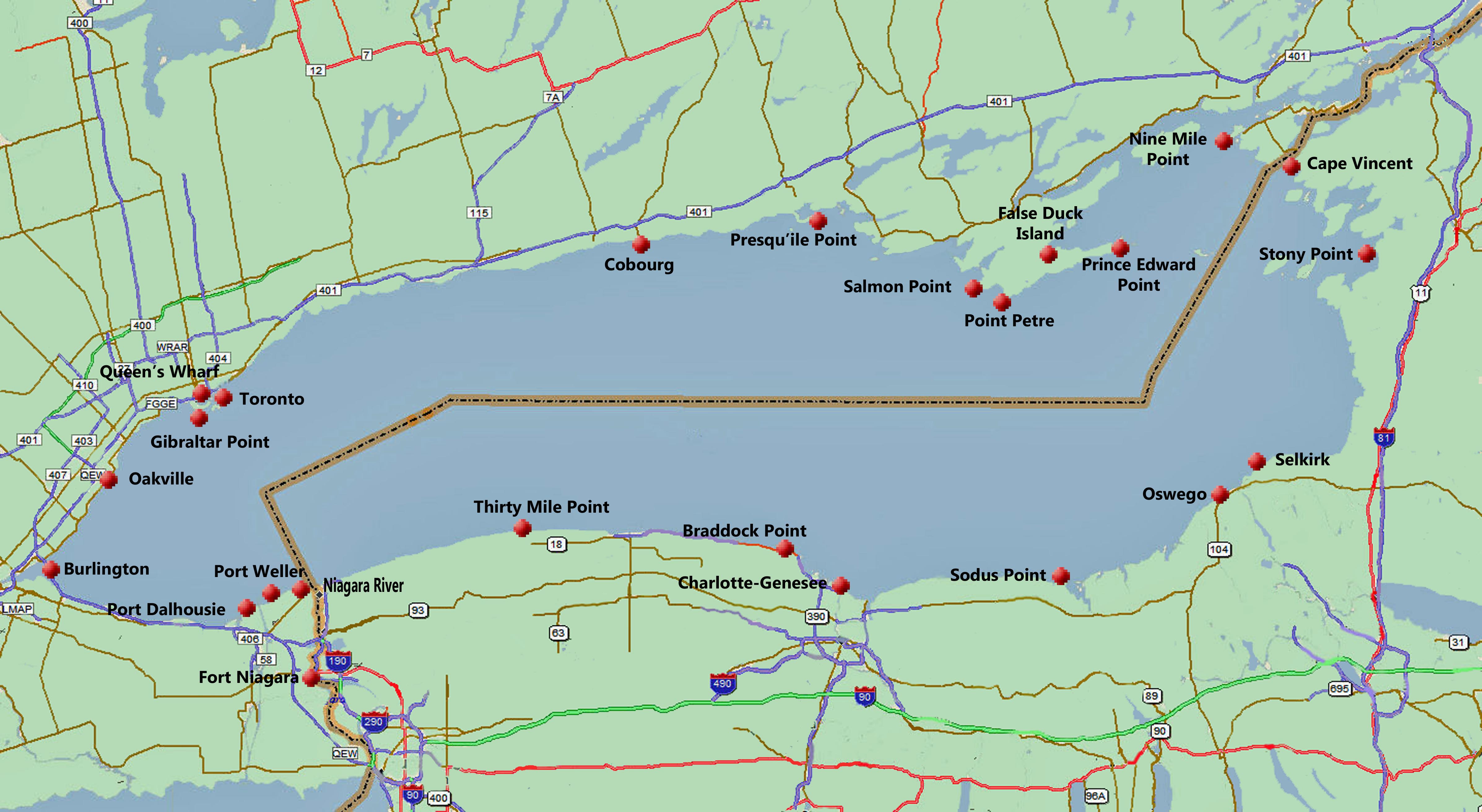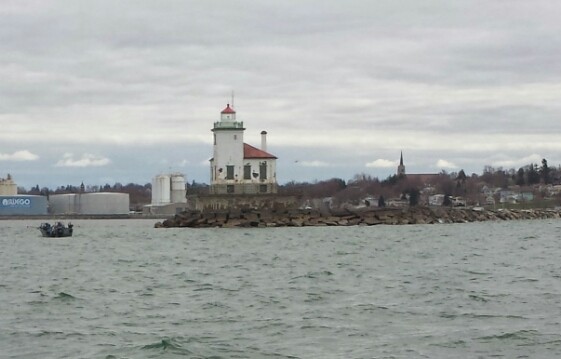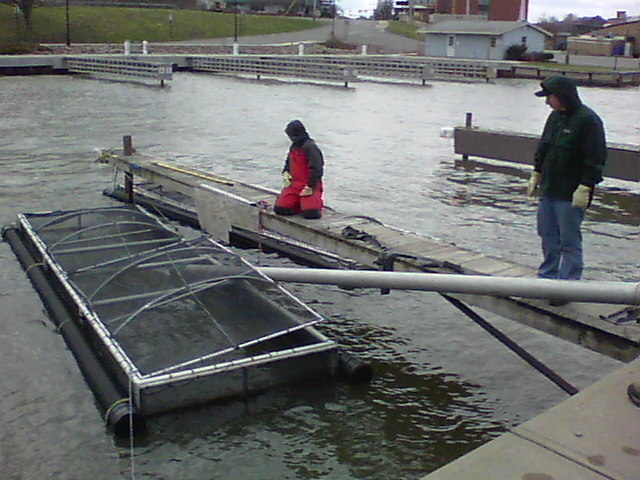With a length of 193 miles and a width of 53 miles, Lake Ontario is actually the smallest of the five Great Lakes with a surface area of 7,340 square miles. However, due to Lake Ontario’s average depth of 283 feet and a maximum depth of 802 feet, water volume held in Lake Ontario exceeds Lake Erie.
The deepest portion of Lake Ontario is the Eastern Basin, which allows us, fishermen from Oswego, NY to access deeper water in a closer distance to shore than many other ports of Lake Ontario. This is one of the reasons for choosing Oswego, NY as my home port for Broad Horizons Guide and Charter Service. I am able to get to fish in deep water much quicker and more efficiently. This means more productive fishing for my clients along with less time lost to running offshore.
Port of Oswego, NY
Along with the excellent deep water accessibility of the Port of Oswego, we also have the second largest tributary of Lake Ontario, the Oswego River. The Oswego River has an average discharge of 6,900 cubic feet per second which places it ahead of the Genesee River, Black River, and the Salmon River, making it second only to the mighty Niagara River. The inflow of the Oswego River is a major contributing factor to our excellent early season fishing . The river discharge brings warmer nutrient rich water to the cold shoreline of Lake Ontario. The Oswego River is also a major focal point for the mature salmon and trout as they return from Lake Ontario to the tributaries for their annual spawning runs.
Along with Oswego’s great attributes to our Lake Ontario sportfishing, the Port of Oswego also offers several amenities to travelers. Oswego, NY is located approximately 35 minutes from Syracuse at the end of Route 481, a major travel route that connect to the NYS Thruway. The City of Oswego also has several lodging and dining options for travelers to enhance their visit.
Lake Ontario Open Water Fishery
Salmon River Fish Hatchery
Broad Horizons Guide and Charter Service primarily focuses on the six salmon and trout species present in Lake Ontario, Chinook (King) salmon, Coho salmon, Atlantic salmon, Steelhead/Rainbow trout, Brown trout and Lake trout. During certain parts of the season we may focus on one or more of these sportfish more than others. However, any of them could be encountered on my Lake Ontario fishing charters.
To help support Lake Ontario’s world-class fishery, the New York State Department of Environmental Conservation operates a stocking program. The contribution of the stocking program is imperative to the health of Lake Ontario’s sportfishing industry. Each year, the NYSDEC determines appropriate stocking numbers for each species.
2019 Stocking Numbers:
Chinook/King salmon 1.06 Million fish
Coho salmon 245,000 fish
Steelhead/Rainbow trout 615,700 fish
Brown trout 400,000 fish
Atlantic salmon 50,000 fish
Lake trout 400,000 fish
The Salmon River Hatchery in Altmar, NY is a major hatchery facility for rearing of the salmon and trout stocked into Lake Ontario each year. Since the hatchery’s construction in 1980, it has been raising Chinook/King salmon, Coho salmon, Steelhead/Rainbow trout, Brown trout, and Atlantic salmon for the stocking program in Lake Ontario. The facility is open to the public during certain parts of the year and viewing is available for egg collection from the spawning salmon during October.
Net Pen Projects
Along with the NYSDEC’s stocking efforts, several ports along Lake Ontario participate in Net Pen Projects. This is a program to help acclimate and imprint the local tributary water on the fingerling salmon before their release to Lake Ontario. As part of this, the NYSDEC supplies fingerling salmon which are held in “net pens” submerged in the local bay or tributary. These fish remain in the care of volunteers who assume the responsibility of maintaining and repairing the holding pens and feeding the fish multiple times a day. Then when the water conditions are suitable, the pens are towed by boat to deeper water and the fingerling salmon are released to Lake Ontario.
Tagging and tracking methods have been implemented by the NYSDEC to track the productivity of the Net Pen Projects. The fingerlings salmon are marked with a microscopic tag at the fish hatchery. Fisherman creel census and data collection is used to determine the effectiveness of the pen-rearing. As the fish are caught throughout Lake Ontario, the statistics are compiled. These statistics are used to determine the percentage of fish that return from Lake Ontario to spawn in the tributary they were reared in. The results of the statistics show that the Net Pen Projects are having a very positive impact on Lake Ontario sportfishing.
Click here to add your own text

